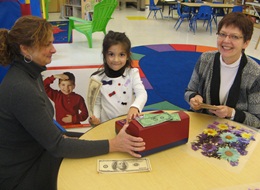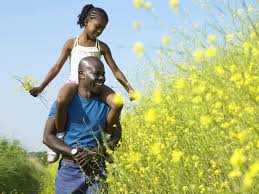
Usually we have people coming to our Visitors Center to see the wildlife exhibits or wildife behind the center. Yesterday we had wildlife visiting to see the humans on display. Where these three little raccoons came from and where they were going remains a mystery. We just don’t know who will show up at the preserve.
Three Masked Visitors
June 14, 2013 at 3:54 pm (environment, mammals, Montour Preserve, nature, observations, wildlife)
Celebrate National Outdoors Month!
June 8, 2013 at 10:40 am (Activities, boating, Brunner Island, community, fishing, geocaching, Hiking, Lake Wallenpaupack, Martins Creek, Montour Preserve, nature, nature photography, outdoors, photography, recreation, Susquehanna Riverlands, Uncategorized)
“The United States is blessed with a wealth of natural diversity that remains at the heart of who we are as a people. … Our natural surroundings animate the American spirit, fuel discovery and innovation, and offer unparalleled opportunities for recreation and learning. During Great Outdoors Month, we celebrate the land entrusted to us by our forebears and resolve to pass it on safely to future generations.”
-President Barack Obama
What better way to participate in National Outdoors Month with friends and family than at PPL’s environmental preserves? Our preserves offer camping facilities, miles of hiking trails, boating, picnic areas, geocaching and much more for your outdoor adventures. See you there!
Enhancing the Habitat
March 18, 2013 at 2:29 pm (birds, conservation, environment, Montour Preserve, nature, outdoors, plants, wildlife)
 In a cooperative effort between the Pennsylvania Game Commission, the Wildlife Management Institute and PPL, invasive bush honeysuckle is being removed from land managed by the PPL Montour Preserve. Bush honeysuckle was introduced to the states from Eurasia as an ornamental shrub, for wildlife cover and for soil erosion control. It grows rapidly and takes over an area, forms a dense shrub layer, decreasing light and depleting soil nutrients. Bush honeysuckle grows in an early-successional forest habitat.
In a cooperative effort between the Pennsylvania Game Commission, the Wildlife Management Institute and PPL, invasive bush honeysuckle is being removed from land managed by the PPL Montour Preserve. Bush honeysuckle was introduced to the states from Eurasia as an ornamental shrub, for wildlife cover and for soil erosion control. It grows rapidly and takes over an area, forms a dense shrub layer, decreasing light and depleting soil nutrients. Bush honeysuckle grows in an early-successional forest habitat.
A young forest habitat, or early-successional habitat is required to maintain sustainable populations of many species. American woodcock, ruffed grouse, cottontail rabbit and indigo bunting are examples of the many species that find young growth shrubs and trees suitable. Young forest habitat also provides food and cover for many other species that use a variety of habitats, including ring-necked pheasants, song sparrow and white-tailed deer.
 Habitat improvements and maintenance are proposed for existing young forest habitats. To maintain the young forest stage of plant succession, ongoing habitat management practices, primarily periodic treatments, will be completed as needed. A large part of the habitat
Habitat improvements and maintenance are proposed for existing young forest habitats. To maintain the young forest stage of plant succession, ongoing habitat management practices, primarily periodic treatments, will be completed as needed. A large part of the habitat
Exotic bush honeysuckle is often confused with native honeysuckle species. Most native honeysuckles have solid stems and are an excellent food source for birds. Learn more at the National Park Service’s website. management plan includes the control of invasive species and noxious weeds, like bush honeysuckle, autumn olive and multi-flora rose. All habitat improvements to existing young forest habitat are proposed as enhancements.
To ask your questions, contact us at pplpreserves@pplweb.com.
Find directions to our preserves, program information and trail maps at pplpreserves.com.
Calling all bird lovers
January 29, 2013 at 5:19 pm (Activities, audubon, bird count, birds, birds of prey, Brunner Island, community, conservation, eagles, education, Envirothon, Holtwood, Lake Wallenpaupack, Montour Preserve, nature, observations, outdoors, Pennsylvania, Susquehanna Riverlands, volunteer, volunteering, wildlife)
Tags: audubon, bird count, birding, birds, birds of prey, bluebirds, community, conservation, eagles, education, Holtwood, Lake Wallenpaupack, Martins Creek, Montour Preserve, nature, observations, Pennsylvania, Riverlands, science, volunteer
Did you know that PPL’s environmental preserves have been directly involved in efforts to raise awareness of birds and their habitat, and to restore peregrine falcons, bald eagles, ospreys and other bird species to Pennsylvania? Through a “Bird Town” alliance with the Audubon Society, PPL works to raise awareness of birds and their habitats through education, awareness and training activities.
Here is a chance for all bird lovers to become engaged. The National Audubon Society is seeking participants for The Great Backyard Bird Count, an annual four-day event from Feb. 15-18 that engages bird watchers in counting birds to create a real-time snapshot of where the birds are.
Anyone interested in volunteering to take part in this event can grab their binoculars and sign up here: http://www.birdsource.org/gbbc/howto.html. Volunteers provide important information on the status and trends of our bird populations.
To learn more about PPL’s commitment to birds of prey throughout Pennsylvania, we invite you to read and follow our blog.
PPL makes generous donation to child care center
January 24, 2013 at 12:35 pm (Activities, children, community, education, Montour Preserve, Pennsylvania, students)
Tags: children, community, education, Montour Preserve, Pennsylvania

From left to right, Diana Dixon, Danville Child Development Center executive
director, and preschooler Safiyya Akmal
handle “money” from the “cash register” with Teri MacBride, PPL regional
community relations director.
PPL Corporation recently demonstrated its commitment to corporate citizenship with a $30,000 donation to the Danville Child Development Center in Montour County near Danville, Pa.
PPL’s donation, made through the Pennsylvania Educational Improvement Tax Credit Program, will go toward the center’s prekindergarten scholarship fund.
“These scholarships help provide high quality child care to those who normally can’t afford it, and in an area that does not have many high quality, affordable child care programs available,” said Teri MacBride, regional community relations director.
The center has been an Educational Improvement Tax Credit pre-K scholarship organization since 2010. The center is accredited by the National Association of Young Children and is a Keystone Stars program participant. It serves between 400 and 500 children each year.
“We’ve had a close relationship with the Danville Child Development Center for four years now,” MacBride said. “The center provides excellent child care to the local community, and is exactly the kind of organization that PPL wants to support.”


